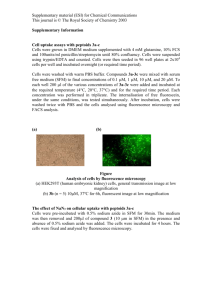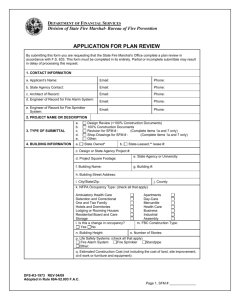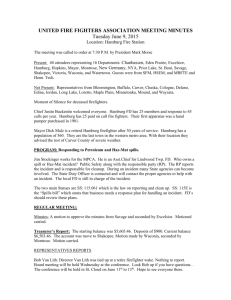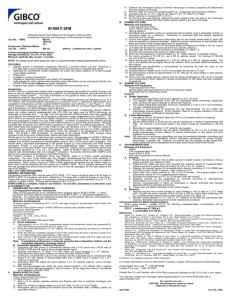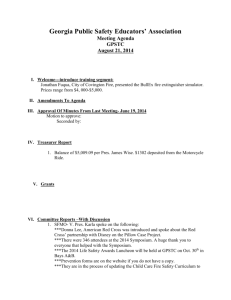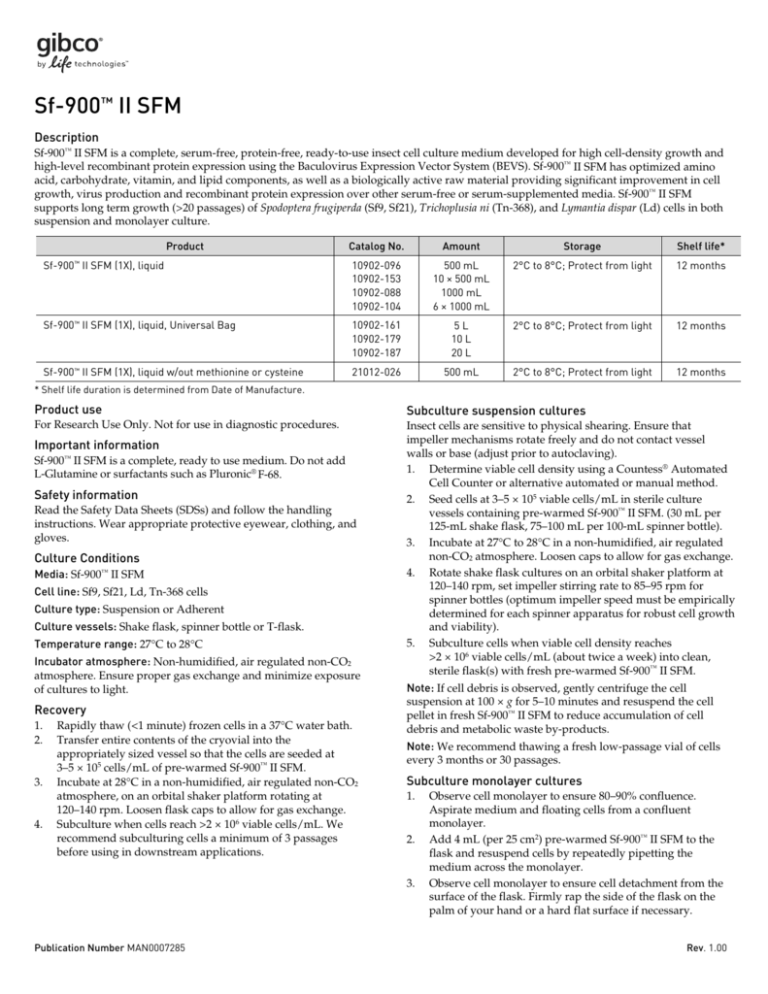
Sf-900™ II SFM
Description
Sf-900™ II SFM is a complete, serum-free, protein-free, ready-to-use insect cell culture medium developed for high cell-density growth and
high-level recombinant protein expression using the Baculovirus Expression Vector System (BEVS). Sf-900™ II SFM has optimized amino
acid, carbohydrate, vitamin, and lipid components, as well as a biologically active raw material providing significant improvement in cell
growth, virus production and recombinant protein expression over other serum-free or serum-supplemented media. Sf-900™ II SFM
supports long term growth (>20 passages) of Spodoptera frugiperda (Sf9, Sf21), Trichoplusia ni (Tn-368), and Lymantia dispar (Ld) cells in both
suspension and monolayer culture.
Product
Catalog No.
Amount
Storage
Shelf life*
Sf-900™ II SFM (1X), liquid
10902-096
10902-153
10902-088
10902-104
500 mL
10 × 500 mL
1000 mL
6 × 1000 mL
2°C to 8°C; Protect from light
12 months
Sf-900™ II SFM (1X), liquid, Universal Bag
10902-161
10902-179
10902-187
5L
10 L
20 L
2°C to 8°C; Protect from light
12 months
Sf-900™ II SFM (1X), liquid w/out methionine or cysteine
21012-026
500 mL
2°C to 8°C; Protect from light
12 months
* Shelf life duration is determined from Date of Manufacture.
Product use
Subculture suspension cultures
For Research Use Only. Not for use in diagnostic procedures.
Insect cells are sensitive to physical shearing. Ensure that
impeller mechanisms rotate freely and do not contact vessel
walls or base (adjust prior to autoclaving).
1. Determine viable cell density using a Countess® Automated
Cell Counter or alternative automated or manual method.
2. Seed cells at 3–5 × 105 viable cells/mL in sterile culture
vessels containing pre-warmed Sf-900™ II SFM. (30 mL per
125-mL shake flask, 75–100 mL per 100-mL spinner bottle).
3. Incubate at 27°C to 28°C in a non-humidified, air regulated
non-CO2 atmosphere. Loosen caps to allow for gas exchange.
4. Rotate shake flask cultures on an orbital shaker platform at
120–140 rpm, set impeller stirring rate to 85–95 rpm for
spinner bottles (optimum impeller speed must be empirically
determined for each spinner apparatus for robust cell growth
and viability).
5. Subculture cells when viable cell density reaches
>2 × 106 viable cells/mL (about twice a week) into clean,
sterile flask(s) with fresh pre-warmed Sf-900™ II SFM.
Important information
Sf-900™ II SFM is a complete, ready to use medium. Do not add
L-Glutamine or surfactants such as Pluronic® F-68.
Safety information
Read the Safety Data Sheets (SDSs) and follow the handling
instructions. Wear appropriate protective eyewear, clothing, and
gloves.
Culture Conditions
Media: Sf-900™ II SFM
Cell line: Sf9, Sf21, Ld, Tn-368 cells
Culture type: Suspension or Adherent
Culture vessels: Shake flask, spinner bottle or T-flask.
Temperature range: 27°C to 28°C
Incubator atmosphere: Non-humidified, air regulated non-CO2
atmosphere. Ensure proper gas exchange and minimize exposure
of cultures to light.
Recovery
1.
2.
3.
4.
Rapidly thaw (<1 minute) frozen cells in a 37°C water bath.
Transfer entire contents of the cryovial into the
appropriately sized vessel so that the cells are seeded at
3–5 × 105 cells/mL of pre-warmed Sf-900™ II SFM.
Incubate at 28°C in a non-humidified, air regulated non-CO2
atmosphere, on an orbital shaker platform rotating at
120–140 rpm. Loosen flask caps to allow for gas exchange.
Subculture when cells reach >2 × 106 viable cells/mL. We
recommend subculturing cells a minimum of 3 passages
before using in downstream applications.
Note: If cell debris is observed, gently centrifuge the cell
suspension at 100 × g for 5–10 minutes and resuspend the cell
pellet in fresh Sf-900™ II SFM to reduce accumulation of cell
debris and metabolic waste by-products.
Note: We recommend thawing a fresh low-passage vial of cells
every 3 months or 30 passages.
Subculture monolayer cultures
1.
2.
3.
Publication Number MAN0007285
Observe cell monolayer to ensure 80–90% confluence.
Aspirate medium and floating cells from a confluent
monolayer.
Add 4 mL (per 25 cm2) pre-warmed Sf-900™ II SFM to the
flask and resuspend cells by repeatedly pipetting the
medium across the monolayer.
Observe cell monolayer to ensure cell detachment from the
surface of the flask. Firmly rap the side of the flask on the
palm of your hand or a hard flat surface if necessary.
Rev. 1.00
4.
5.
6.
7.
8.
Transfer entire cell suspension to a sterile conical tube; any
cell clumps quickly settle to the bottom after 1–2 minutes.
Pipet the clumps into a 10-mL pipette and gently break up
the clumps by pressing the pipette tip against the bottom of
the tube and gently expell the cells back into the medium,
repeat if necessary to break up remaining clumps. Pipetting
too harshly will decrease cell viability due to sensitivity of
cells to shear force.
Determine viable cell density using a Countess® Automated
Cell Counter.
Inoculate 2–5 × 104 viable cells/cm2 into new culture flasks
containing pre-warmed Sf-900™ II SFM (5 mL/25 cm2).
Incubate at 27°C to 28°C in a non-humidified, air regulated
non-CO2 atmosphere. Loosen caps to allow for gas exchange.
Three days post-plating, aspirate medium from the cell
monolayer and re-feed the culture with an equal volume of
fresh medium gently added to the side of the flask.
Note: Sf9 cells are not anchorage dependent and may be
transferred between monolayer and spinner/shaker culture
repeatedly without noticeable change in viability, morphology,
or growth rate.
™
Adapt cells to Sf-900 II SFM
It is critical that cell viability be ≥90% and the growth rate be in
mid-logarithmic phase prior to initiating adaptation procedures.
Direct adaptation
Monolayer cultures need only have the culture media exchanged
with prewarmed Sf-900™ II SFM as described in Subculture
monolayer cultures.
Transfer suspension cultures into Sf-900™ II SFM as follows:
1. Centrifuge the cell suspension at 100 × g for 5–10 minutes.
Aspirate and discard the supernatant.
2. Resuspend the cell pellet in pre-warmed Sf-900™ II SFM at a
viable cell density of >5 × 105 cells/mL and transfer to
appropriate culture vessel.
3. Return to incubator and monitor cell growth.
Note: If suboptimal performance is achieved using the direct
adaptation method, use the sequential adaptation method.
2.
3.
4.
5.
6.
7.
Determine the viable cell density and calculate the required
volume of cryopreservation medium to give a final cell
density of >1 × 107 cells/mL.
Prepare the required volume of cryopreservation medium of
92.5% Sf-900™ II SFM (50:50 ratio of fresh to conditioned
media) + 7.5% DMSO on day of intended use, store at 4°C
until use.
Centrifuge cell suspension at 100 × g for 5–10 minutes.
Resuspend the cell pellet in the pre-determined volume of
4°C cryopreservation medium.
Dispense aliquots of this cell suspension into cryovials
according to the manufacturer’s specifications.
Cryopreserve in an automated or manual controlled rate
freezing apparatus following standard procedures (1°C
decrease per minute).
Transfer frozen cells to liquid nitrogen, (vapor phase)
storage at –200°C to –125°C.
Related products
Product
Catalog no.
Sf9 Cells Adapted in Sf-900™ II SFM
12659
™
Sf21 Cells Adapted in Sf-900 II SFM
12682
™
BaculoDirect N-Term Expression Kit
12562-054
BaculoDirect™ N-Term Transfection Kit
12562-062
BaculoDirect™ C-Term Expression Kit
12562-013
™
BaculoDirect C-Term Transfection Kit
12562-039
™
Bac-N-Blue Transfection Kit
K855-01
Bac-to-Bac® Baculovirus Expression System
10359
Bac-to-Bac® Vector Kit
10360
®
Countess Automated Cell Counter
C10227
Explanation of symbols and warnings
The symbols present on the product label are explained below:
Temperature Limitation
Manufacturer
Batch code
Use By:
Catalog number
Sequential adaptation
Follow the procedures for subculture of suspension or
monolayer cultures with the following modifications.
1. During the adaptation procedure use a seeding density of
>5 × 105 viable cells/mL.
2. Subculture cells into stepwise increasing ratios of Sf-900™ II
SFM to original medium with each subsequent passage
(25:75, 50:50, 75:25, 90:10 followed by 100% Sf-900™ II SFM).
Multiple passages at each step may be needed.
After several passages in 100% Sf-900™ II SFM, the viable cell count
should exceed 2–4 × 106 cells/mL with a viability exceeding 85%
within 4–6 days of culture.
Cryopreservation
1.
Prepare the desired quantity of cells, harvesting in mid-log
phase of growth with viability >90%. Reserve the
conditioned medium to prepare cryopreservation medium.
Caution, consult
accompanying documents
Consult instructions
for use
Keep away
from light
Sterilized using aseptic
processing techniques
Limited product warranty
Life Technologies Corporation and/or its affiliate(s) warrant
their products as set forth in the Life Technologies’ General
Terms and Conditions of Sale found on Life Technologies’
website at www.lifetechnologies.com/termsandconditions. If
you have any questions, please contact Life Technologies at
www.lifetechnologies.com/support.
Important licensing information
These products may be covered by one or more Limited Use
Label Licenses. By use of these products, you accept the terms
and conditions of all applicable Limited Use Label Licenses.
For additional technical information such as Safety Data Sheets (SDS), Certificates of Analysis, visit www.lifetechnologies.com/support
For further assistance, email techsupport@lifetech.com
All trademarks are the property of Thermo Fisher Scientific and its subsidiaries unless otherwise specified. Pluronic is a trademark of BASF Corporation.
©2014 Thermo Fisher Scientific Inc. All rights reserved.
DISCLAIMER - LIFE TECHNOLOGIES CORPORATION AND/OR ITS AFFILIATE(S) DISCLAIM ALL WARRANTIES WITH RESPECT TO THIS DOCUMENT, EXPRESSED OR IMPLIED, INCLUDING
BUT NOT LIMITED TO THOSE OF MERCHANTABILITY, FITNESS FOR A PARTICULAR PURPOSE, OR NON-INFRINGEMENT. TO THE EXTENT ALLOWED BY LAW, IN NO EVENT SHALL
LIFE TECHNOLOGIES AND/OR ITS AFFILIATE(S) BE LIABLE, WHETHER IN CONTRACT, TORT, WARRANTY, OR UNDER ANY STATUTE OR ON ANY OTHER BASIS FOR SPECIAL, INCIDENTAL,
INDIRECT, PUNITIVE, MULTIPLE OR CONSEQUENTIAL DAMAGES IN CONNECTION WITH OR ARISING FROM THIS DOCUMENT, INCLUDING BUT NOT LIMITED TO THE USE THEREOF.
www.lifetechnologies.com

